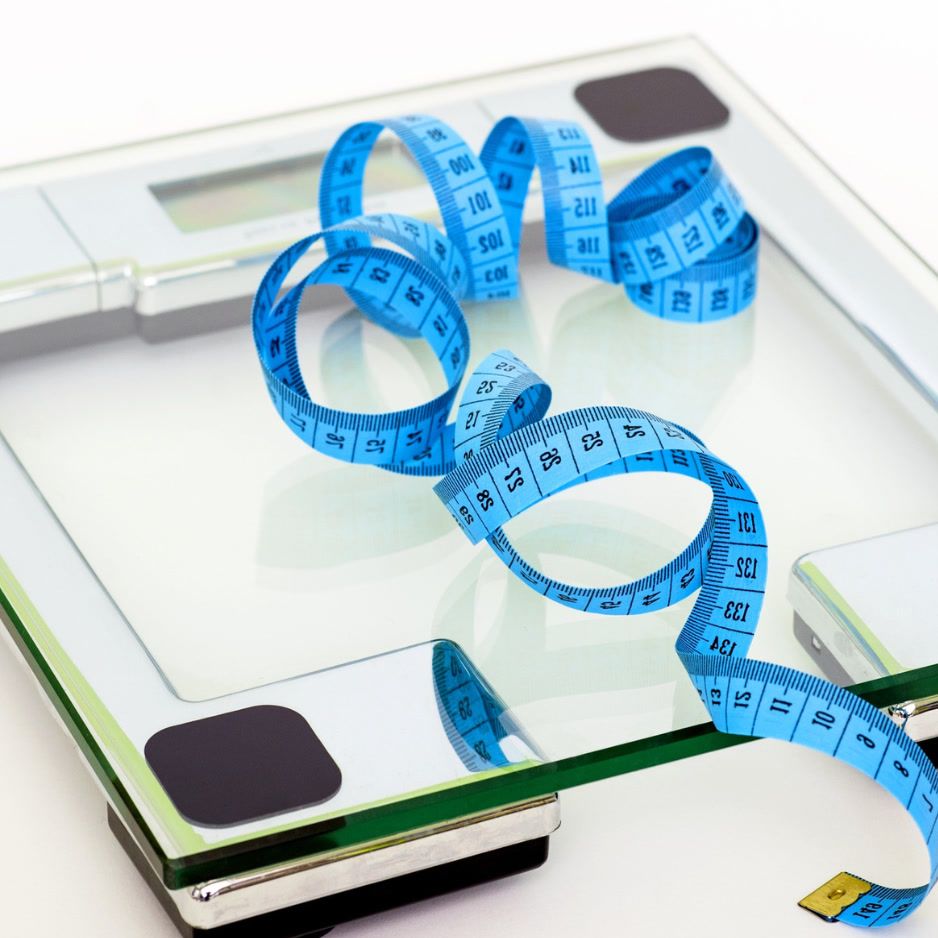Best Cardio for Fat Loss: Science-Backed Guide

Best Cardio for Fat Loss: The Science-Backed Guide to Choosing Your Workouts
When it comes to shedding body fat, the cardio landscape can feel overwhelming—but which exercises actually deliver results? Whether you're sprinting through your first HIIT session or pondering a peaceful walk around the block, the "best" cardio depends on your goals, schedule, and what you'll actually stick with long-term.
This guide cuts through the confusion with research-backed insights and practical workout plans tailored to your lifestyle. The key takeaway is that there's no single "perfect" cardio exercise; success comes from strategically combining different approaches for maximum fat loss.
The Science Behind Cardio and Fat Loss
Fat loss fundamentally comes down to one principle: burning more calories than you consume. Cardio exercises help by elevating your heart rate, increasing calorie expenditure both during and after your workout through a process called excess post-exercise oxygen consumption (EPOC).
But here's what makes some cardio more effective than others: intensity matters. A 2024 systematic review in Nature comparing High-Intensity Interval Training (HIIT) and Moderate-Intensity Continuous Training found that HIIT demonstrated superior weight reduction effects, with participants experiencing greater reductions in body fat percentage—males lost 6.67% body fat with HIIT versus 2.74% with steady-state cardio.
Heart Rate Zones: Your Fat-Burning GPS
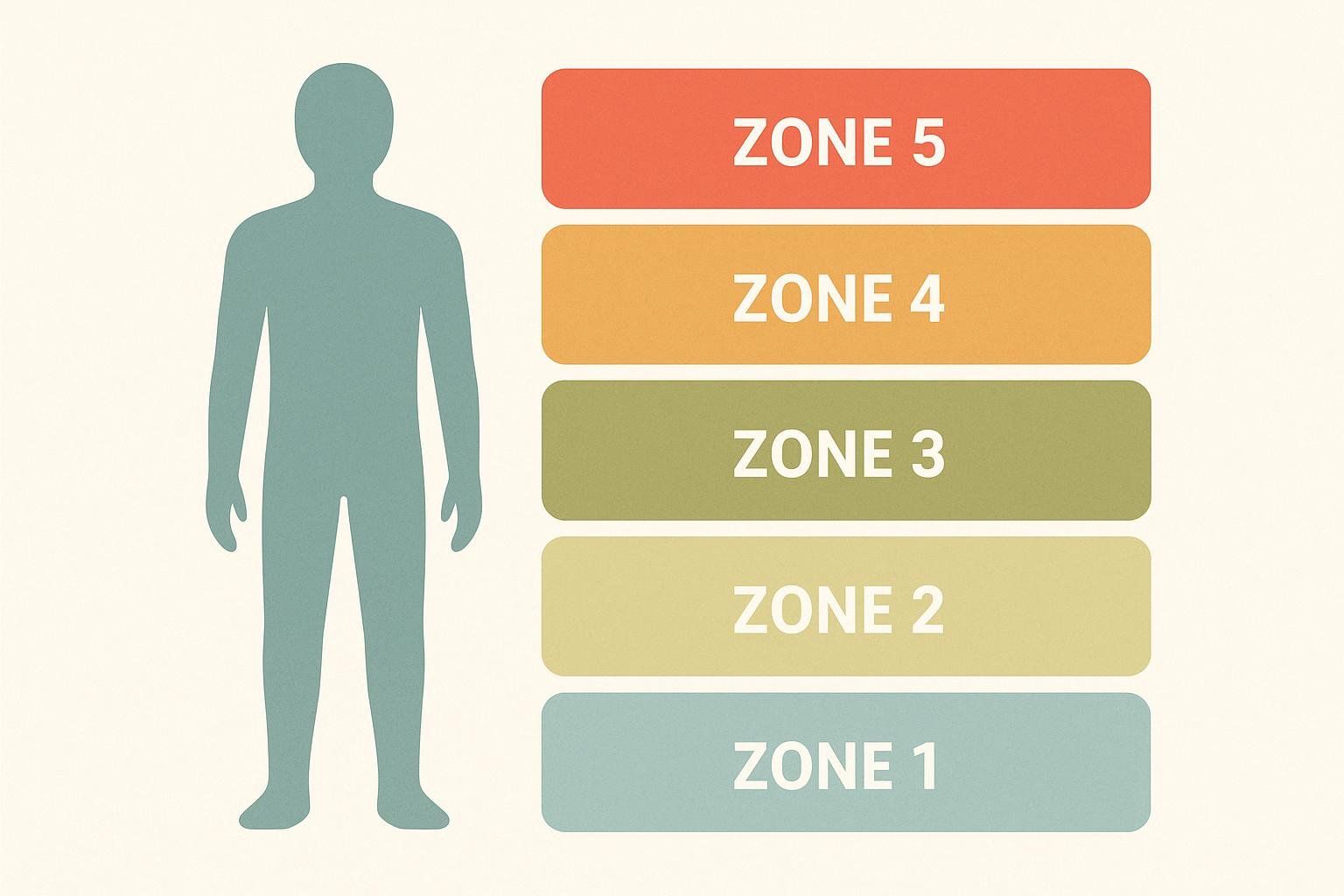
Understanding heart rate zones helps you choose the right intensity for your goals:
- Zone 1 (50-60% max heart rate): Recovery and warm-up
- Zone 2 (60-70% max heart rate): The "fat-burning zone" where about 65% of calories burned come from fat. While a higher percentage of calories comes from fat in this zone, higher-intensity training burns significantly more total calories, leading to greater overall fat loss.
- Zone 3 (70-80% max heart rate): Aerobic base building
- Zone 4 (80-90% max heart rate): HIIT work intervals
- Zone 5 (90-100% max heart rate): Maximal bursts
A common rule of thumb to estimate your max heart rate is 220 minus your age, though this formula is a very general estimate that can be inaccurate for many individuals. More precise methods like lab testing or fitness assessments exist, and individual results can vary significantly based on genetics and fitness level.
Which Type of Cardio is Best for Fat Loss?
The short answer: HIIT for efficiency, LISS for sustainability, and a combination of both for optimal results. Here's why each approach has its place in your fat-loss strategy.

HIIT: Maximum Results, Minimum Time
HIIT alternates short bursts of intense exercise with recovery periods. Research shows HIIT is particularly effective for younger adults (18-30 years), promoting both fat oxidation and muscle retention.
HIIT Benefits:
- Time-efficient: Typically 15-30 minutes
- Afterburn effect: Continues burning calories post-workout
- Metabolic boost: Improves insulin sensitivity
- Muscle preservation: Helps maintain lean mass during weight loss
Sample HIIT Workout (20 minutes):
- 5-minute warm-up
- 8 rounds of: 30 seconds all-out effort, 90 seconds easy recovery
- 5-minute cool-down
LISS: Steady, Sustainable Fat Burning
LISS involves maintaining a consistent, moderate pace for longer durations—think jogging, cycling, or swimming at conversational pace.
LISS Benefits:
- Lower injury risk: Gentler on joints and nervous system
- Easy recovery: Can be done more frequently
- Fat utilization: Burns a higher percentage of calories from fat
- Stress relief: Often more meditative and relaxing
Sample LISS Workout (45 minutes):
- 5-minute warm-up
- 35 minutes at Zone 2 intensity (can hold a conversation)
- 5-minute cool-down
Combining HIIT and LISS for Optimal Results
Research suggests that combining HIIT and LISS provides optimal fat loss results. A weekly split might include 1-2 HIIT sessions for metabolic benefits and 2-3 LISS sessions for volume and recovery.
The Best Cardio Exercises for Fat Loss
Important Note: Calorie burn varies significantly based on body weight and muscle mass, exercise intensity and technique, and individual metabolism and fitness level.
The most effective cardio is the one you'll actually do consistently. Here are research-backed options organized by intensity level:
High-Intensity Exercises for Maximum Effect
1. HIIT Workouts
- Why it's effective: Creates significant EPOC (afterburn effect) for continued calorie burn
- Best for: Time-crunched individuals wanting maximum efficiency
- Examples: Burpees, sprint intervals, fast-paced bodyweight circuits
2. Jump Rope
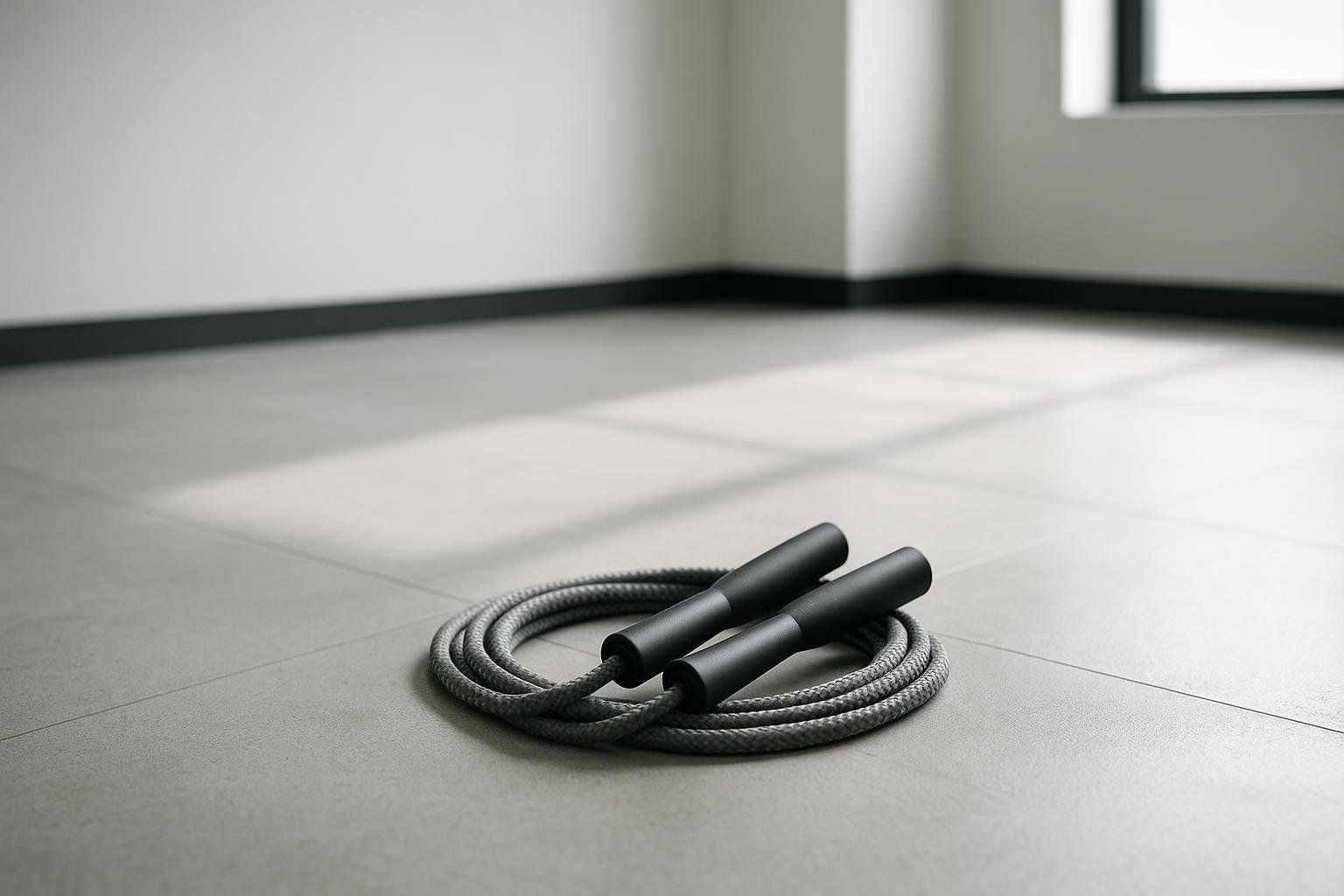
- Why it's effective: Full-body coordination with exceptional calorie burn
- Best for: Athletes wanting agility and conditioning
- Equipment: Minimal—just a rope
3. Running/Sprinting
- Why it's effective: Easily scalable intensity, requires minimal equipment
- Best for: Building cardiovascular base and race training
- Variations: Sprint intervals, tempo runs, hill sprints
Moderate-High Intensity Options

4. Rowing Machine
- Why it's effective: Full-body engagement with both cardio and strength components
- Best for: Those with joint concerns who still want high intensity
- Benefits: Lower impact than running while maintaining calorie burn
5. Kickboxing
- Why it's effective: Combines cardiovascular and strength elements
- Best for: Those seeking stress relief and engaging alternatives to gym cardio
- Benefits: Highly engaging and builds coordination
6. Cycling (Indoor/Outdoor)
- Why it's effective: Lower impact while providing high calorie burn
- Best for: Joint-friendly alternative to running
- Variations: Spin classes, outdoor hills, interval training
Moderate Intensity Versatility
7. Step-Ups/Stair Climbing
- Why it's effective: Functional movement pattern that builds lower-body power
- Best for: Home workouts with minimal equipment
- Equipment: Stairs, sturdy step, or stadium bleachers
8. Dancing
- Why it's effective: Combines cardio with coordination and enjoyment
- Best for: Social exercisers who find traditional cardio boring
- Benefits: Improves balance and provides mental health benefits
9. Elliptical Machine
- Why it's effective: Low impact with customizable resistance and incline
- Best for: Gym-goers wanting joint-friendly intensity
- Benefits: Upper and lower body engagement
Low-Impact, Sustainable Options
10. Swimming
- Why it's effective: No joint stress while providing full-body resistance
- Best for: Injury recovery or those with joint limitations
- Benefits: Works all major muscle groups simultaneously
11. Walking (Brisk/Incline)
- Why it's effective: Most sustainable form of cardio that can be done anywhere
- Best for: Beginners and daily movement goals
- Variations: Incline walking, hiking, power walking
Remember: Consistency and sustainability matter more than absolute intensity—the "best" cardio is the one you'll actually stick with long-term.
Will 30 Minutes of Cardio a Day Burn Fat?
Yes, absolutely! Thirty minutes of daily cardio can be highly effective for fat loss when combined with proper nutrition. Here's what the research shows:
The 30-Minute Sweet Spot
Studies indicate that 30 minutes of moderate-intensity cardio can burn approximately 200-400 calories, depending on your body weight and exercise intensity. Over a week, that can contribute significantly to the overall calorie deficit needed for fat loss.
Making 30 Minutes Work for You
For Beginners:
- Start with 30 minutes of brisk walking
- Progress to alternating walk/jog intervals
- Focus on consistency over intensity
For Intermediate Exercisers:
- Mix 15 minutes HIIT + 15 minutes LISS
- Alternate between different cardio modalities
- Include 2-3 strength training days
For Advanced Athletes:
- High-intensity 30-minute sessions
- Complex movement patterns (burpees, mountain climbers)
- Sport-specific conditioning
The Key to Success: Progressive Overload
As your fitness improves, you'll need to progressively challenge yourself:
- Week 1-2: 30 minutes moderate intensity
- Week 3-4: Add 5-minute intervals of higher intensity
- Week 5+: Incorporate HIIT protocols or increase duration
Explaining the 30/30/30 Fat Loss Method
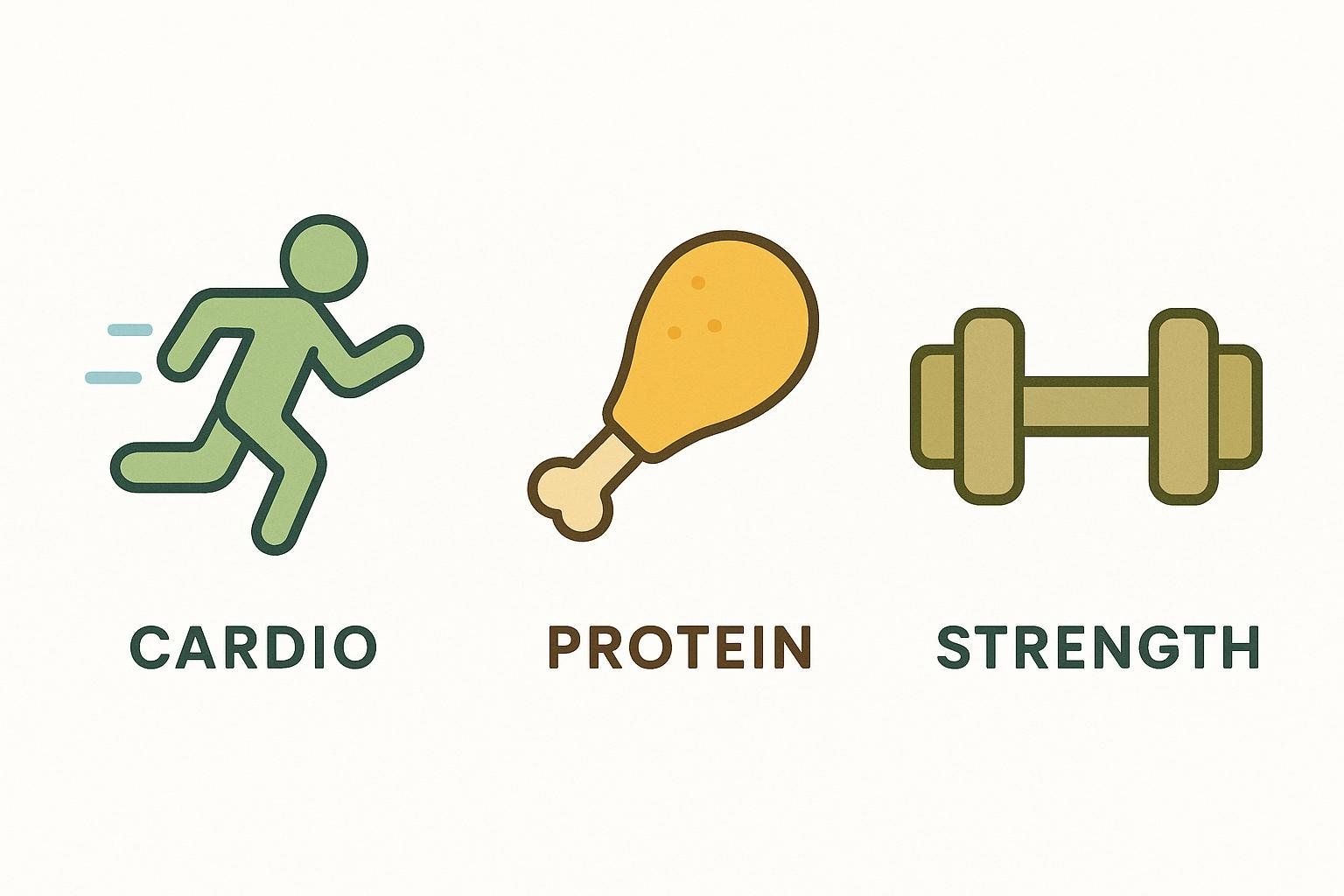
The "30/30/30 method" is a popular wellness trend that combines three key elements, each lasting 30 minutes or involving 30 grams. While interpretations vary, here are the most common versions:
Version 1: The Morning Protocol
- 30 minutes of cardio first thing in the morning (fasted or with minimal food)
- 30 grams of protein within 30 minutes of waking up
- 30 minutes of strength training later in the day
The theory behind this protocol is that performing cardio in a fasted state may prioritize fat for fuel, while post-workout protein helps preserve muscle. The main benefit is creating a consistent, structured morning routine centered on activity and nutrition.
Version 2: The Daily Structure
- 30 minutes of movement (any type of physical activity)
- 30 grams of fiber throughout the day from whole foods
- 30 minutes of meal prep to ensure healthy eating choices
This version emphasizes the holistic approach to fat loss, recognizing that nutrition and preparation are crucial components.
Version 3: The Workout Split
- 30 seconds of high-intensity work
- 30 seconds of rest or low-intensity recovery
- Repeated for 30 rounds (30 minutes total workout)
This is essentially a structured HIIT protocol that's easy to remember and implement.
Does the 30/30/30 Method Work?
The effectiveness comes from its simplicity and structure rather than any magical combination. The principles behind each version are sound:
- Regular cardio burns calories and improves cardiovascular health
- Adequate protein preserves muscle mass during weight loss
- Meal preparation supports consistent healthy eating habits
- HIIT protocols are proven effective for fat loss
The bottom line: Any method that helps you maintain consistency with exercise and nutrition will support fat loss. The 30/30/30 approach provides a simple framework that many find easy to follow.
Sample Weekly Plans for Your Goals
These are sample plans that should be adapted to your personal fitness level and health status—always listen to your body and modify as needed.
Weekly Plan for Beginners
Perfect for those new to exercise or returning after an extended break, focusing on building sustainable habits at home.
Weeks 1-2: Building the Foundation
- Monday: 15-minute brisk walk
- Wednesday: 10-minute beginner circuit
- Structure: 3 rounds total
- Work/Rest: 45 seconds work, 15 seconds rest between exercises
- Exercises: Jumping Jacks, Bodyweight Squats, High Knees at controlled pace
- Friday: 20-minute walk outdoors
- Weekend: One longer walk (30+ minutes)
Weeks 3-4: Adding Structure
- Monday: 20-minute walk + 5 minutes bodyweight exercises
- Wednesday: 15-minute low-impact HIIT (30 seconds work, 90 seconds rest). Try exercises like high knees, bodyweight squats, and modified push-ups
- Friday: 25-minute brisk walk or bike ride
- Weekend: Explore new activity (hiking, swimming, dancing)
Goals for Weeks 5-6 and Beyond:
- Build up to 4-5 cardio sessions per week
- Mix of 2-3 LISS sessions and 1-2 HIIT sessions
- Focus on activities you genuinely enjoy
Tips for Success:
- Start with 10-minute sessions if 15 feels overwhelming
- Focus on consistency over intensity
- Track steps with a phone app—aim for 6,000 daily, building to 8,000
Weekly Plan for Intermediate Athletes
Designed for experienced exercisers facing stalled progress who need advanced protocols to reignite fat loss.
Weeks 1-2: Introduce Advanced Intervals
- Monday: 20-minute Tabata cycling session (includes 5-minute warm-up, two 4-minute Tabata sets with 2 minutes rest between, and 3-minute cool-down)
- Tuesday: 45-minute Zone 2 LISS walk/jog
- Thursday: 25-minute rowing intervals (1 min hard, 2 min easy × 8 rounds)
- Saturday: 60-minute outdoor bike ride or hike
Weeks 3-4: Add Metabolic Finishers
- Monday: 25-minute bike HIIT + 5-minute finisher of burpees or kettlebell swings, aiming for as many reps as possible with good form
- Tuesday: 50-minute Zone 2 jog/bike ride
- Thursday: 30-minute pyramid intervals (1-2-3-2-1 minutes hard with equal rest)
- Saturday: Active recovery—yoga or easy swim
- Sunday: Long LISS session (60-90 minutes)
Weeks 5-6: Peak Intensity
- Monday: 30-minute HIIT cycling + 10-minute core circuit
- Tuesday: 60-minute Zone 2 bike ride or hike
- Thursday: 25-minute rowing intervals + flexibility work
- Friday: Active recovery—yoga or light walking
- Saturday: 75-minute outdoor activity (hiking, cycling, swimming)
Weekly Plan for Busy Professionals
Optimized for those with limited time who need high-impact results from short, strategic workout windows.
Weeks 1-2: Establish Micro-Habits
- Monday: 12-minute morning HIIT
- Structure: 3 rounds total
- Work/Rest: 45 seconds work, 15 seconds rest between exercises
- Exercises: Burpees, Mountain climbers, Jump squats
- Wednesday: 15-minute lunch walk + 2 flights of stairs
- Friday: 20-minute family activity (bike ride, playground games)
- Weekend: One 30-minute session of vigorous yard work or a fast-paced family walk
Weeks 3-4: Intensify Short Sessions
- Monday: 15-minute HIIT circuit before work
- Tuesday: 10-minute stair climbing during lunch break
- Thursday: 20-minute evening bike ride or jog
- Friday: 25-minute family walk after dinner
- Weekend: One longer activity (45+ minutes) with family
Weeks 5-6: Optimize Every Opportunity
- Daily 5-minute "movement snacks" every 2 hours
- 3-4 focused 15-25 minute sessions per week
- Stack cardio with family time and commuting
- Use high-intensity options to maximize limited time
Efficiency Hacks:
- Combine cardio with commuting (bike to work, walk to station)
- Use bodyweight circuits for equipment-free workouts
- Schedule sessions like important meetings—non-negotiable
The Nutrition Connection: Why Diet Trumps Cardio
Here's a reality check supported by health authorities like the Mayo Clinic: you can't out-exercise a bad diet. While cardio burns calories, creating the calorie deficit needed for fat loss requires attention to nutrition.
The 80/20 Rule in Action
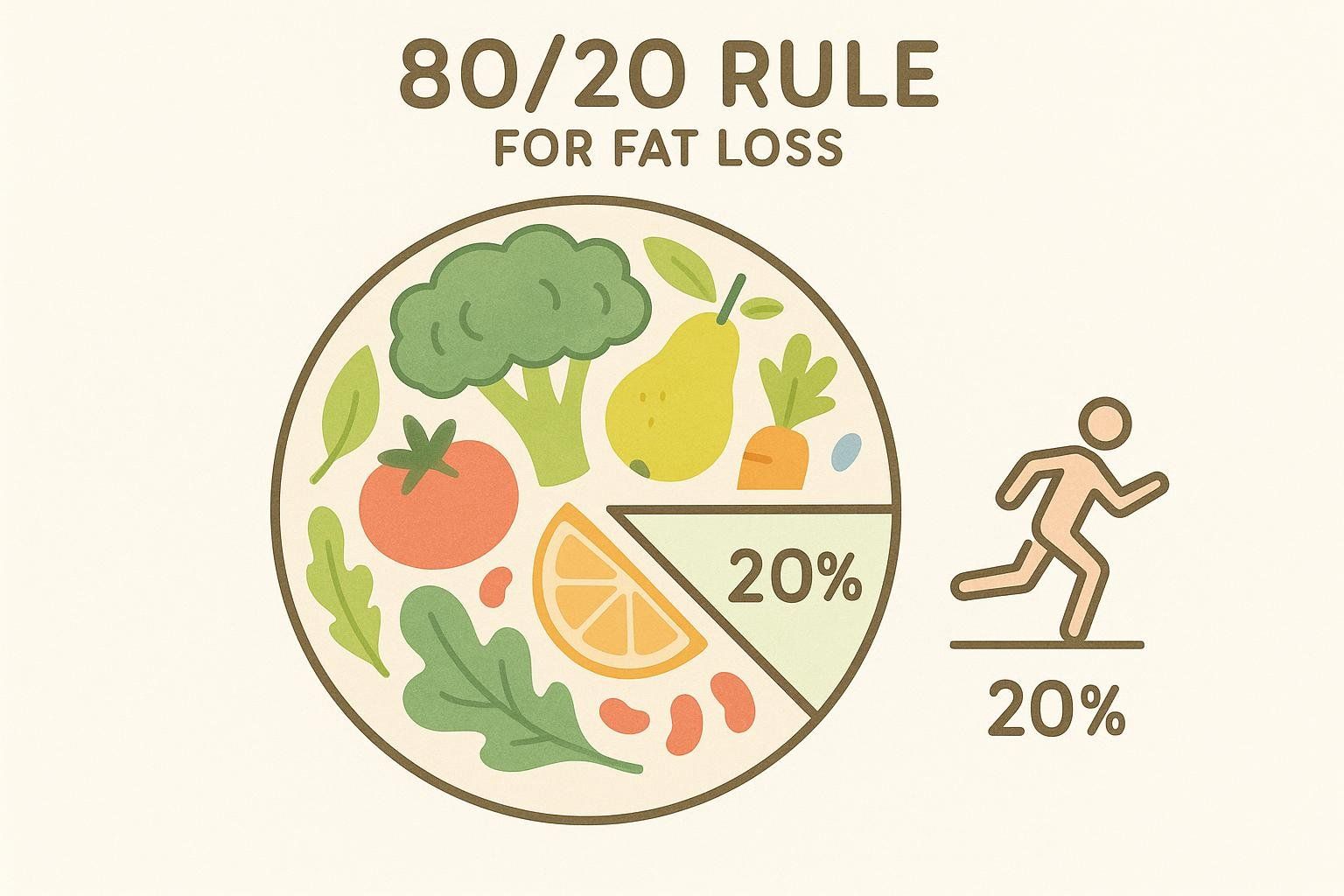
- 80% nutrition: Creating a moderate calorie deficit through portion control and food choices
- 20% exercise: Burning extra calories and preserving muscle mass
Key Nutrition Principles for Cardio + Fat Loss:
- Maintain adequate protein (0.7–1.0 grams per pound of bodyweight) to preserve muscle during weight loss
- Time carbs around workouts for energy and recovery
- Stay hydrated—proper hydration supports optimal fat oxidation and exercise performance
- Don't drastically under-eat—severe restriction can backfire by slowing metabolism
Strength Training: Cardio's Essential Partner
While cardio burns calories during exercise, strength training builds the muscle that burns calories 24/7. Combining cardio with resistance training prevents muscle loss during weight loss and can even support muscle gain in beginners.
The Perfect Partnership:
- Strength training: 2-3 sessions per week focusing on compound movements
- Cardio: 3-5 sessions per week mixing HIIT and LISS
- Recovery: 1-2 complete rest days
For beginners, check out our guide on strength training basics.
Cardio and DEXA: Tracking Real Results
Here's where things get interesting: regular cardio, especially when combined with strength training, creates measurable changes that show up beautifully on BodySpec DEXA scans. Instead of just watching the scale (which can lie), you can track:
- Visceral fat reduction: Cardio is highly effective at reducing dangerous belly fat around your organs
- Lean muscle preservation: Proper cardio maintains muscle mass during weight loss
- Body composition improvements: See exactly how much fat you've lost versus muscle gained
What to Expect from Cardio Training:
- Early Changes: Improved cardiovascular fitness, better sleep quality, and increased daily energy levels
- Visual Progress: Body composition changes become more apparent, including reduced waist circumference and improved muscle definition
- Longer-Term Success: DEXA scans reveal significant improvements in fat mass reduction and lean mass distribution
Pro tip: Schedule DEXA scans every 12 weeks to track progress that goes beyond the scale.
Common Cardio Mistakes (and How to Avoid Them)
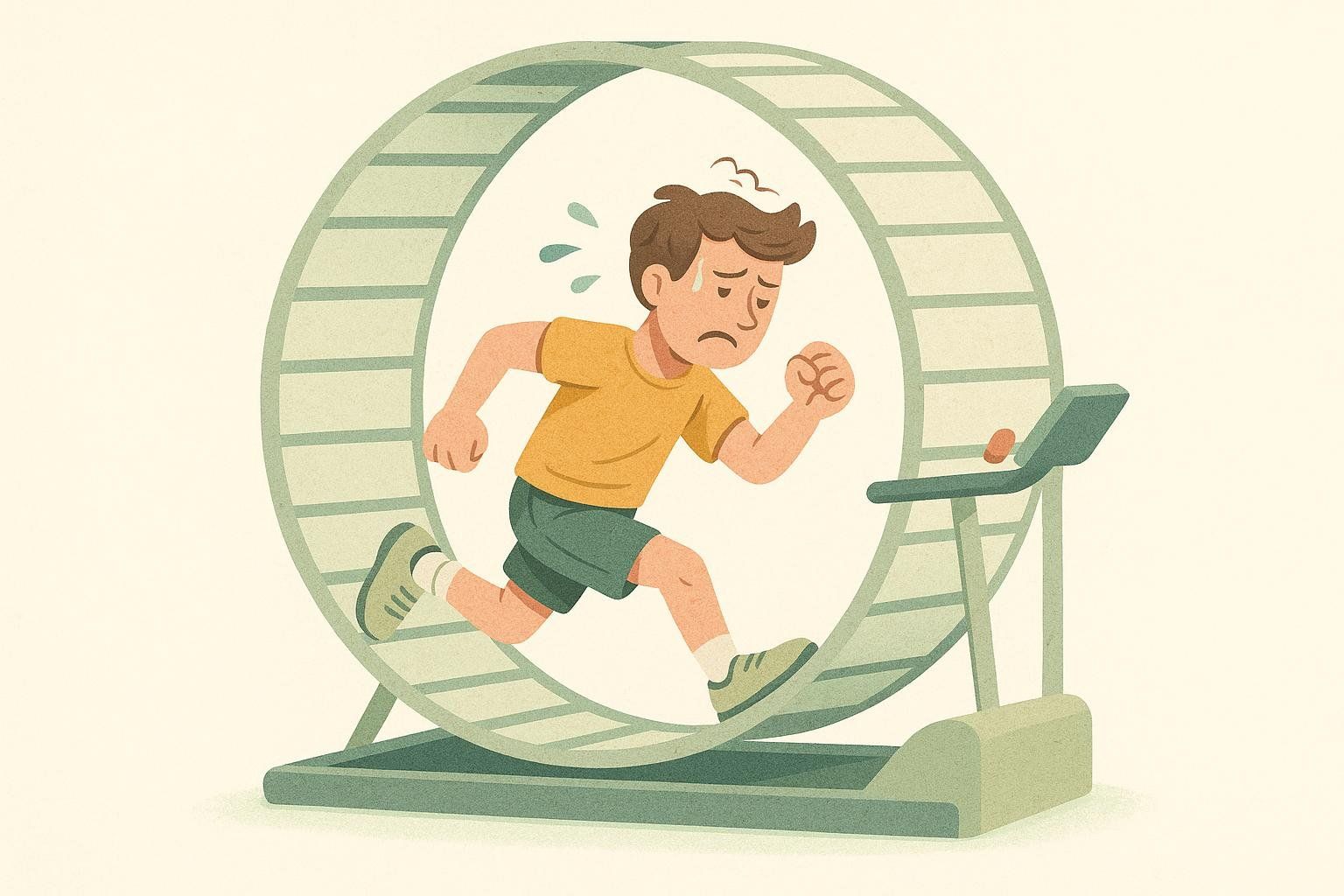
Mistake #1: Going Too Hard, Too Soon
The problem: Burnout, injury, and unsustainable habits
The fix: Follow the 10% rule—increase duration or intensity by no more than 10% per week
Mistake #2: Only Doing One Type of Cardio
The problem: Adaptation plateau and overuse injuries
The fix: Rotate between 2-3 different cardio modalities weekly
Mistake #3: Ignoring Recovery
The problem: Elevated cortisol, poor sleep, stubborn fat retention
The fix: Include 1-2 easy recovery days and prioritize sleep quality
Mistake #4: Cardio Without Strength Training
The problem: Muscle loss, "skinny fat" appearance, metabolic slowdown
The fix: Learn the importance of balancing cardio and strength training for optimal body recomposition
Mistake #5: Expecting Linear Progress
The problem: Frustration when results plateau temporarily
The fix: Focus on non-scale victories like improved endurance, better sleep, and how clothes fit
The Bottom Line: Your Cardio Roadmap
The best cardio for fat loss isn't a single exercise—it's a sustainable mix that fits your life, preferences, and goals. Whether that's high-intensity intervals that torch calories in 15 minutes or peaceful walks that clear your head for 45 minutes, consistency trumps perfection every time.
Key takeaways:
- HIIT excels for time efficiency and metabolic benefits but requires more recovery
- LISS provides sustainable volume and is easier to recover from but takes more time
- Combining both approaches often yields the best results
- Your nutrition creates the calorie deficit—cardio supports and accelerates it
- Strength training is essential for preserving muscle during fat loss
- Track body composition changes with DEXA scans for the complete picture
Ready to see how your cardio efforts translate to real body composition changes? Visit your nearest BodySpec location to establish your baseline and track progress as you implement your personalized fat loss strategy.
Remember: The most effective cardio routine is the one you'll actually stick with. Start where you are, use what you have, and do what you can. Your future self will thank you for taking that first step.


